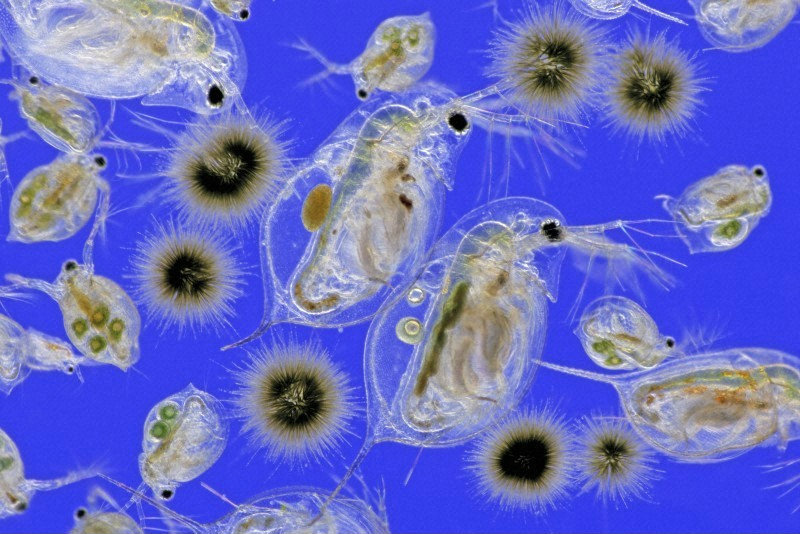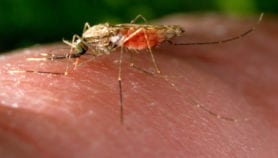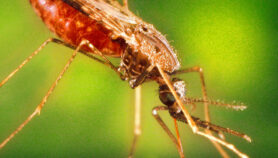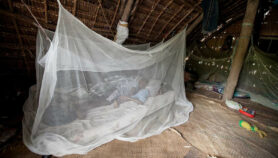By: Joel Winston
Send to a friend
The details you provide on this page will not be used to send unsolicited email, and will not be sold to a 3rd party. See privacy policy.
Improving the biodiversity of ponds and lakes in malaria-endemic regions would offer a powerful and sustainable way to control malaria, according to a study.
A common mosquito-controlling strategy is to apply biological insecticides, such as Bacillus thuringiensis israelensis (Bti) — a bacterium that produces toxins that target mosquito larvae. Because of this precise impact, Bti treatment preserves more biodiversity than chemicals such as DDT, which are lethal to most species.
But Bti breaks down in the environment after a few days, making secondary mosquito outbreaks possible if there are no natural predators or competitors to keep mosquito larvae levels low.
Now researchers from two German institutions have shown how diverse communities of mosquito-eating crustaceans — tiny plankton-like creatures from the same family as crabs — can keep the larval populations in check by out-competing them.
The authors say their work shows for the first time that crustaceans can be more effective at sustainably suppressing mosquito larval populations than Bti treatment.
To carry out the study, the researchers introduced mosquito populations to several artificial ponds at a test site in Leipzig, Germany, containing crustacean communities of varying numbers and species diversity. In each test, the team measured the numbers of mosquito larvae and the stage of their life cycle they had reached over time. After 21 days, they also added Bti to assess its effect on the larvae in the presence of the crustaceans.
The research, published in this month’s edition of the Journal of Vector Ecology, shows that mosquito populations decreased significantly in the ponds when there was a high diversity of crustaceans. The insects also became as much as ten times more sensitive to the Bti toxin in such ponds. But this effect was hardly detectable in the ponds with the most diverse and fully developed crustacean populations as the number of mosquito larvae was so low.
“Crustaceans, as potential competitors, can reduce mosquito populations.”
Leon Blaustein, University of Haifa
“Controlling mosquito larvae with toxicants is only a short-term and unsustainable approach, as you will always have to put in pesticides again,” says Matthias Liess, head of the Department of System Ecotoxicology at the Helmholtz Centre for Environmental Research, Germany, and lead author of the paper.
“With this approach, you can use less pesticide or none at all, which is less harmful for the environment and also for people who might use the water for drinking.”
Liess also says the approach will be valuable in the developing world.
“In all permanent lakes, you have these kinds of crustaceans, and with a plankton net you can collect them and move them to small water bodies where you find mosquitoes,” he says. “So it’s a low-tech approach. Everybody can do it.”
While the species of mosquito used in these European experiments, Culex pipiens, generally does not carry human malaria, says Liess, over the past year, his team has been collaborating with the International Centre of Insect Physiology and Ecology in Kenya on similar experiments involving other malaria-carrying species of mosquito.
Liess says he is optimistic that the approach is feasible for African malaria control. He says they hope to publish more information next year.
Leon Blaustein, professor of ecology at the University of Haifa, Israel, tells SciDev.Net: “This work adds to a growing body of literature showing that crustaceans, as potential competitors, can reduce mosquito populations. Managing wetlands to have high biodiversity could therefore reduce malaria risk.”
He also notes that the synergistic effect of the Bti and the crustaceans is especially interesting. “This suggests that integrating these two management approaches can give a very successful environmentally friendly control,” he says.
References
Journal of Vector Ecology doi: 10.1111/j.1948-7134.2013.12055.x (2013)














